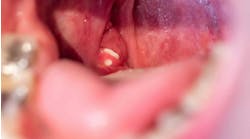Dear RDH,
The extensive media coverage of the AIDS virus and its transmission has instilled fears in many people to the extent that it has discouraged them from seeking routine dental care. It is essential that health care workers be able to address this issue when confronted with questions and concerns from apprehensive patients. Many of the reasons for these fears stem from the exploitation of the incident involving a Florida dentist infecting six of his patients.
The reality of the number of AIDS cases actually transmitted in a dental office makes these fears somewhat irrational. By educating patients about infection control equipment and procedures, perhaps some of these fears can be put to rest for many people.
The facts of the actual instances of AIDS being transmitted to a patient during dental treatment are not discouraging. The Centers for Disease Control and Prevention (CDC) have traced all known cases of transmission to a single dentist in Florida, Dr. David Acer. The investigation concluded that Dr. Acer did infect his patients, but the exact route of transmission still hasn`t been resolved.
There have been many proposals as to how the disease was conveyed to the patients. It has been suggested that the dentist purposely infected his patients. Although an acquaintance of Dr. Acer had implied this theory, he stated under oath that he had never actually been told of such a plot. A second suggestion is that the dentist had received some sort of injury and exposed his patients to his blood; however, dentists surveyed claim that these injuries usually occur only a few times a year and usually happen outside of the patient`s mouth. A third possibility is that Dr. Acer`s instruments were somehow contaminated with his blood, then weren`t properly sterilized. Subsequently, these instruments were used on his patients. According to interviews with his staff members, it wasn`t likely that his equipment was used on himself.
Although the route of transmission may never be known, DNA sequencing tests show that the strain of the dentist`s HIV were closely related to those of his infected patients. The fact that this is the only documented situation involving this sort of transmission concludes that the probability of being infected during a dental appointment is highly unlikely.
Upon direct exposure to HIV infected blood, the chance of becoming infected is a mere 0.3%, comparatively, the chance of contracting the hepatitis B virus upon direct contact is 30 percent. This is due to the fact that there is less virus present per milliliter of blood that is contaminated with HIV, so it takes more blood to infect an individual with HIV than with other viruses such as hepatitis B.
It is important to educate patients about the transmission of AIDS and the likelihood of transmission occurring. It is also a good idea to let them know about the precautions that are being taken to ensure their protection in the dental office.
This includes letting them know briefly about sterilization equipment and disinfection procedures. For example, a dentist could leave a pamphlet in his waiting room outlining the universal precautionary procedures that are made in his office and informing the patients about the effectiveness of these processes. Those that chose to do so could read the information while in the waiting room.
During an exam, the hygienist may ask the patient if there are any concerns regarding infection control, help them understand the likelihood of disease transmission, and explain the measures that are taken to prevent these occurrences. It might also be wise to send information to patients that haven`t been to the dentist recently to assure them that their health won`t be compromised by seeking dental treatment.
By informing patients about how AIDS is transmitted and letting them know about infection control procedures, hopefully many people`s fears can be put to rest so that they can received the routine dental care that is necessary without sacrificing their confidence or their health.
Kimberly Ware
EWU dental hygiene student
Spokane, Washington





